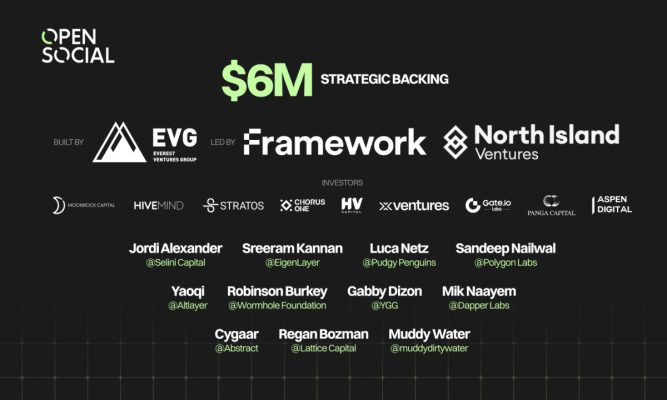While crypto mining and staking are both competitive methods of creating new coins and increasing the circulation of the total cryptocurrencies, they achieve this differently. For example, crypto mining is a complex process that involves expensive, decentralized computer networks to verify and secure blockchain.
On the other hand, crypto staking is a straightforward way of earning rewards from holding your crypto for a certain period to support the blockchain operation.
If you compare the 2 methods, earning crypto is much easier with staking. Unlike mining, the staking cost is lower, as it doesn’t need expensive equipment in all cases, such as a powerful CPU, GPU, or ASIC, a good internet connection, or constant maintenance.
For Cardano investors, staking ADA tokens is one of the best ways to grow their portfolio. That’s because when you stake ADA, you will get additional crypto just from holding it locked and working within the network. Additionally, you will always have custody of your coin, meaning the staking pools have no control over your asset.
So, let’s find out more about how to start staking ADA and what are the best places where you can earn passive income this way.
What Is Cardano (ADA)?
ADA is the digital currency that powers Cardano, a 3rd generation blockchain platform. It is named after Augusta Ada King, the first computer programmer who lived between 1815 and 1852. As Cardano’s currency, ADA is used in the platform’s proof of stake (PoS) consensus mechanism to reward its users for participating in the staking pool.
Although ADA and ETH are similar in multiple ways, including employing a similar blockchain securing mechanism (PoS), ADA coins are relatively cheaper than ETH. That’s essential as the Cardano ecosystem is planned to offer advanced dApp capabilities that need low operational costs to be profitable.
Moreover, while ETH is more market-established, ADA has substantial backing. It has a strong team and money for development, and its system is open for review.
In addition, the Cardano blockchain is thought to have more potential for scaling than Ethereum or Bitcoin. Its transactions happen quickly, lowering energy usage and the general cost of operations.
Cardano also works based on smart contracts stored on the blockchain, along with their backups. Smart contracts can be used in multiple situations, and although building them requires writing code, the process can be easily understood. Usually, smart contracts provide higher security and sustainability, as well as transparency.
Yet, given that Cardano is an unfinished product, ADA can still improve and become a more promising investment. However, like other cryptocurrencies, the coin is volatile, hence calling for carefully planned investment.
How to Stake Cardano (ADA) on Your Own
You can attempt to start staking ADA on your own without much of a problem or investment. The entry bar is quite low. Theoretically, there is no minimum stake amount needed to start a pool.
However, you will need to deposit 500 ADA to the blockchain when registering the pool, and an additional amount will be required for fees.
On the technical side, to build a node, run it, and connect it to the Cardano mainnet, you need to build a station with:
- Linux operating system;
- At least 2 cores 2GHz processor;
- At least 8 GB RAM;
- At least 24 GB hard drive space;
- A good internet connection, about 1 GB of bandwidth per hour, plus a public IP4 address.
However, keep in mind that although it’s quite easy to get started, it’s quite tough to be successful on your own. One of the essential factors based on which the Cardano staking mechanism chooses slot leaders (validators) is correlated to the number of coins a node holds.
This means that although you may start on your own, to be profitable, you will ultimately need to attract delegators to your pool to raise the total pool stake.
And for reference, the average stake pool’s annual returns have been estimated at around 3 – 5%.
ADA Staking with a Pool
Staking ADA through a staking pool can help you earn rewards without the need to hold a significant amount of tokens in the first place. The process is usually quite simple, and there are many platforms that allow users to join ADA staking pools.
Besides the top exchanges available, the most popular option might also be the Daedalus Wallet, which is a Cardano wallet available for desktops. The Daedalus staking pool is popular thanks to its user-friendliness and fair rewards.
But how do you stake Cardano after all?
1. Set up Your Cryptocurrency Wallet
A cryptocurrency wallet is an application that functions as a regular wallet, allowing you to store your passkeys. In other words, it serves as the interface that enables you to access your crypto. Some of the platforms that support Cardano staking are:
- Binance;
- Kraken;
- eToro;
- OKX;
- Coinbase;
- Daedalus Wallet;
- KuCoin;
- Crypto.com.
2. Deposit ADA into Your Wallet
Once you’ve created a wallet, deposit your ADA tokens. You can purchase the tokens directly on the exchange or using your wallet.
Alternatively, you can transfer tokens you already have into your wallet.
3. Select the Best Staking Pool for Cardano
Stake pools are groups of people that validate transactions on a platform. They are referred to as delegation from wallet hardware. ADA provides insights into each staking pool to help you better select the most appropriate one. Remember, your choice of staking pool will affect your reward.
When choosing a staking pool, it is vital to consider its performance, decentralization, and community. For example, a staking pool with a single operator is safer than a gigantic enterprise. Similarly, choosing a staking pool with good marketing strategies and growth potential is best.
4. Navigate to Staking
Once you have selected your preferred Cardano staking pool, you can start staking Cardano. On your wallet, select “Cardano,” enter the amount of ADA tokens you want to stake, and click “stake now.” This process is extremely similar from one platform to another, so maybe there will be slight changes in words or dashboards, but you should easily find your way to the ADA staking page.
Most platforms will require you to choose your staking duration (like creating a fixed bank account), which shows how long your ADA tokens will be locked up. If you withdraw the token before the expiry of the selected period, your stake will be considered null, and therefore no rewards will be earned.
Best ADA Staking Pools
Kraken
Kraken is among the best crypto exchanges on the market and allows users to stake ADA through a pretty simple process. All you have to do is:
- Sign up on Kraken;
- Purchase or deposit Cardano;
- Go to “Rewards”;
- Choose Cardano;
- Start staking your tokens.
The APY (Annual Percentage Yield) for staking ADA ranges from 3% to 6%. There is no minimum amount required for staking.
eToro
On eToro, ADA staking is available almost worldwide, with a few limitations (some UK users, investors from Germany and the US). Depending on their level (Bronze, Silver, Gold, Platinum, Diamond, Platinum+), users can get various ADA rewards for staking their tokens. The reward percentage of the monthly staking yield varies between 75% and 90%.
Coinbase
On Coinbase, the current estimated APY for ADA is 2.04% for a period of 365 days. The reward rate varies in time and strongly depends on the lock-up period you set.
To stake ADA on Coinbase, you should:
- Sign in or register on Coinbase;
- Purchase or deposit Cardano;
- Go to the “Earn” category;
- Scroll down and click on “Cardano”;
- Choose the amount of ADA you want to stake and the lock-up period.
KuCoin
KuCoin is another great platform for staking Cardano, as it is safe, user-friendly, and distributes rewards pretty quickly. It has a reference APR of 3%, with a flexible term and a redemption period of 1 day.
To stake ADA on KuCoin, you will have to:
- Register or sign in on KuCoin;
- Purchase or deposit ADA;
- Click on “Earn” and choose “Staking”;
- Search for ADA in the list available;
- Choose the amount of ADA you want to stake;
- Read and agree to the Cryptocurrency Mining Agreement;
- Subscribe to the staking service.
Benefits of Staking Cardano
Generates Passive Income
While the amount of passive income generated from staking ADA differs depending on the staking pool, lock-up period, and the amount of ADA you stake, it can generate a remarkable annual profit.
The ability to deposit or withdraw your token anytime makes it even better unless you use a fixed account like Binance. If you hold Cardano, staking it is the best alternative to earning from it than letting it lie idle in your wallet.
No Risk of Loss
While Cardano is volatile like any other crypto, you will not risk losing it by staking. First, it doesn’t leave your wallet, meaning no staking pool controls it. The only risk comes when its value goes down.
Cons of Staking Cardano
Loss of Funds in Case of Lost Passkey
Every investment has its downsides, and so does staking Cardano. Usually, Cardano staking involves no risk, but the absolute risk comes when you lose your wallet’s passkey.
Like all other crypto wallets, there is no way you can recover a digital wallet’s lost secret phrase, meaning you risk losing all your tokens if you lose your wallet’s private keys. Thus, try to keep your passkey and recovery phrase as safe as possible and always make backup versions.
High Staking Fees
Another con of Cardano staking is the increased staking fee, especially when using a staking pool. If you are not keen, a staking pool can take a significant amount from your profit as a staking fee.
And as stated earlier, Cardano is volatile, and its prices are unpredictable. And while the tokens are safe in your wallet, an unforeseen drop in value can lead to an unimaginable decrease in staking reward. For this reason, buying ADA for staking purposes may be a little risky. But at the moment, this is the situation for most cryptocurrencies on the market.
It Can Be Difficult to Start a Staking Pool
Although staking ADA on your own has a low entry bar, it’s quite difficult to scale up your operation.
From this side, a Cardano staking operation isn’t a casual way of earning passive income. Instead, it is a full-on business to which you must dedicate time, effort, and planning.
How Does Cardano Staking Differ from Ethereum?
Minimum Staking Requirements
Although Cardano and Ethereum use similar mechanisms (PoS), they work differently.
Ethereum’s requirement for running a validator node is 32 ETH. As for Cardano, although there is no minimal stake to start a node, you will need to lock 500 ADA plus fees to start a staking pool.
But if you plan to delegate to a staking pool, there usually is no minimum requirement.
Rewards Earned and Lock-up Period
You can unstake your ADA at any time while, in Ethereum’s case, the staked ETH and the rewards are usually locked up for certain periods which you agree to before completing the staking process.
As for annual rewards, the APY varies from one staking calculator to another and from one pool to another in both ETH and ADA cases.
In Conclusion
Staking Cardano is generally and technically safe, given that the digital currency never leaves your wallet. It also features minimal staking requirements compared to its closest competitor, Ethereum.
And as you earn Cardano staking rewards, you are also helping make blockchain operations faster and more stable.

